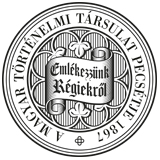Századok – 2012
KÖZLEMÉNYEK AZ 1711. ÉVI SZATMÁRI BÉKE TÖRTÉNETÉRŐL - Kalmár János: Szatmár, 1711: vég, folytonosság, kezdet IV/875
886 KALMÁR JÁNOS 1711. évi szatmári megegyezés 300. évfordulójához kapcsolódó tudományos számvetés ezért ösztönző alkalmat kínálhat arra is, hogy végiggondoljuk: vajon nemzeti nagyjaink képletes értelemben vett szobrának talapzata nem jóval szélesebb-e annál, mint ahányan eddig helyet foglaltak rajta? Azaz, senkit nem kell letaszítani onnan azért, hogy más arra érdemesek is odakerülhessenek. Alighanem érdemes élnünk azzal a szakmai eredmények kínálta lehetőséggel, amely azt sugallja, hogy történelmi személyiségeink közül jóval többekre lehetünk büszkék, mint ahogy eddig gondoltuk. SZATMÁR, 1711: END, CONTINUITY, BEGINNING by János Kalmár (Summary) The settlement of Szatmár of 1711 not only concluded the Rákóczi revolt, but, in a sense at least, was the endpoint of a much longer period, which had been characterised by armed movements directed against the government of Vienna. At the same time, however, some of the conceptions of modernising the structure of the Hungarian Kingdom, which had been put to writing by Hungarian aristocrats after the end of Ottoman occupation, at the end of the 17th century, were kept on the agenda during the Rákóczi revolt as well by part of the nobility which remained faithful to the court. The latter were as discontent with the activities of the government of Vienna in Hungary as their peers who took to arms, but, unlike the rebels, they aimed at making their political ideas prevail not by the force of arms but by political means. In the light of the settlement of Szatmár, the latter way appeared to have been more realistic, and, the result of a mutual compromise by both sides, it proved able to secure the possibility of peaceful development in Hungary for several generations.
